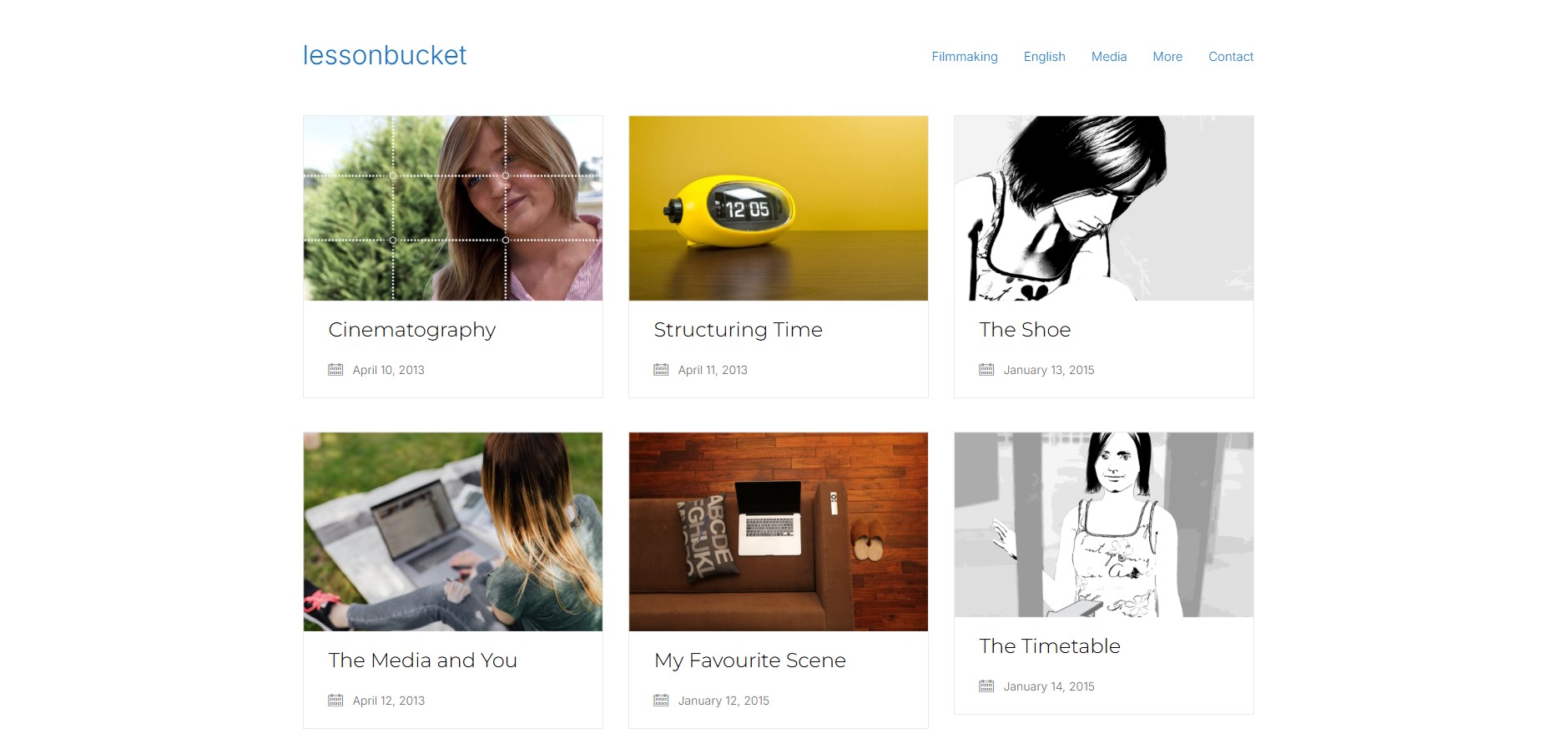The Australian Centre for the Moving Image (ACMI) have a range of high-quality Media resources available as exhibition-based school learning programs or digital teaching and learning resources prepared for a range of achievement levels. ‘Film it’ (ACMI, n.d.a). While ACMI’s (n.d.a) resource is targeting a wide range of year levels (4-10), the learning engages with multiple learning areas across the Australian Curriculum v9.0 (n.d.) and the general capabilities of Critical and Creative Thinking and Personal and Social capabilities (Australian Curriculum, n.d.). While this resource not only prepares media students at the levels 7-8 with foundational skills relating to pre-production, production and post-production in the context of filmmaking it allows students to develop transferrable skills throughout other areas of the curriculum. This resource provides both in-depth resources and step-by-step instructions to allow teachers to scaffold learners not only throughout different year levels but to assist those who require additional learning support (ACMI, n.d.). While being related to the Australian curriculum, teachers in the Victorian education context will need to consider how to align this resource to the specific content descriptions outlined in Levels 7 and 8 of the Victorian Curriculum (VCAA, 2015). By developing the ability to explore and represent ideas (VCAMAE033), build media arts practices (VCAMAM036) and present media artworks VCAMAP037).
Brett Lamb’s (n.d.) Lessonbucket is a collection of well laid out, simple to follow and effective learning activities targeting media students from years 9 to 12. While this resource targets middle to senior years, there is a large ability for teachers to differentiate these learning activities to develop the practical and theoretical skills and knowledge of media students at years 7-8. Lessonbucket provides a good example of flipped teaching to a certain degree however many of the learning activities require individual teachers to differentiate appropriately to suit their specific classroom context. Furthermore, connections to the Victorian Curriculum (VCAA, 2015) are not explicitely stated and require teachers to identify which activities to connect to the correct curriculum content descriptors to suit their teaching and learning of the Media curriculum. Despite this, it is clear that Lessonbucket builds learners skills and knowledge in alignment with the Victorian Curriculum relating to content descriptors VCAMAE033-VCAMAE038 with teachers being required to align learning activities with the relevant curriculum areas. Furthermore, Lessonbucket’s elements of flipped learning allows students to access these as student facing resources if required. Teachers should correctly differentiate and adapt the resource to suit their class context, classroom ability and teaching style with ability to implement various evidenced-based pedagogical approaches from The Department of Education’s (2020) High Impact Teaching Strategies (HITS). This resource could be used within my teaching and learning website to provide quick access to simple, curriculum aligned media lessons that can be used as pre-planned lessons if required or theory and knowledge-based development tools as a student facing resource.
ACMI’s learning resource (ACMI, n.d.) focusses on First Nations Peoples’ history and culture of sharing stories through visual language and its significant role in shaping past, present and future Australian moving image. This resource is one that can be drawn upon as a highly detailed, teacher facing resource providing in-depth information relating to the main topic. Furthermore, this resource reflects the cross curriculum learning of ‘Learning about Aboriginal and Torres Strait Islander histories and cultures’ (VCAA, 2015) which can be linked to specific Victorian Curriculum content descriptors from years 7-8 Media VCAMAR039 and VCAMAP037 (VCAA, 2015) with the resource containing discover and explore prompts along with respond and interpret questions relevant to the curriculum and learning resource. While this resource provides excellent student access to historical and contemporary First Nations Peoples’ storytelling through moving image, it is important that these First Nations perspectives are not only engaged with in the resource content but engaged in with through First Nations’ processes and pedagogy (8 Ways, n.d.; Yunkaporta, 2009). It is important when utilising this resource, teachers engage with relevant pedagogy to support teaching and learning through First Nations’ processes. Yunkaporta’s 8 ways pedagogical approach (2009) such as focussing on the way of story sharing, drawing from each individual learner’s history, culture and “Virtual Schoolbag” (Moll et al., 1992). While this resource is visually engaging, well-structured and student-friendly it should be one that is utilised by teachers as a resource that is drawn upon and linked to relevant teaching and learning activities within the classroom. Through clearly defined questioning that is relevant to different areas of the resource and further learning exploration links allow teachers to utilise this as a scaffold to success and extend student learning through further teacher incorporation of evidence-based teaching strategies such as HITS (Department of Education, 2020).



